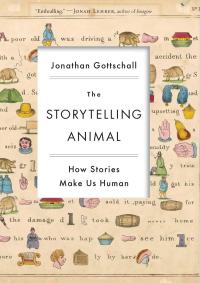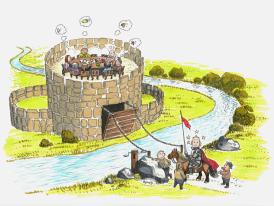If you’ve been following my blog, you will know that I’ve already written about the creative analysis process that I’ve recently been using and about my reflections on that process. You’ll also know that this has all been taking place in the context of a project about how health and social care staff share knowledge. If you’re new to my blog, or have no idea what I’m on about, you might want to have a quick catch up by following the links in the two previous sentences…
 Over the past few months I’ve been working with the materials that came out of that analysis process and trying to craft them into a series of stories about knowledge sharing. Stories (including cartoons and animated videos) are increasingly being used to share information and research findings. The UK’s Health Foundation, for instance, has produced a number of animations which appear to be very popular with a wide range of audiences whilst decision and policymakers are also beginning to call for stories as well as ‘facts’. This is probably because stories often ‘make sense’ to people and connect with them in a way that traditional research reports fail to do, making storytelling (as Gary Myers recently discussed) a valuable knowledge mobilisation tool.
Over the past few months I’ve been working with the materials that came out of that analysis process and trying to craft them into a series of stories about knowledge sharing. Stories (including cartoons and animated videos) are increasingly being used to share information and research findings. The UK’s Health Foundation, for instance, has produced a number of animations which appear to be very popular with a wide range of audiences whilst decision and policymakers are also beginning to call for stories as well as ‘facts’. This is probably because stories often ‘make sense’ to people and connect with them in a way that traditional research reports fail to do, making storytelling (as Gary Myers recently discussed) a valuable knowledge mobilisation tool.
 One of the reasons that stories connect is because human beings are, as literary scholar Jonathan Gottschall has pointed out, ‘storytelling animals’. This chimes with my experience of working with health and social care practitioners who share knowledge on a daily basis. I often hear them telling stories to one another – about the people they are looking after, how they navigated a new system or set of procedures, or the people they worked with months or even years ago. These stories seem to be a powerful way of sharing knowledge (including facts, skills/know-how and emotions) with one another and often have a powerful effect on both the storyteller and the listener (including me). So it made sense to try and create stories as a way of sharing knowledge about knowledge sharing!
One of the reasons that stories connect is because human beings are, as literary scholar Jonathan Gottschall has pointed out, ‘storytelling animals’. This chimes with my experience of working with health and social care practitioners who share knowledge on a daily basis. I often hear them telling stories to one another – about the people they are looking after, how they navigated a new system or set of procedures, or the people they worked with months or even years ago. These stories seem to be a powerful way of sharing knowledge (including facts, skills/know-how and emotions) with one another and often have a powerful effect on both the storyteller and the listener (including me). So it made sense to try and create stories as a way of sharing knowledge about knowledge sharing!
I have to admit that crafting the stories has been more difficult that I first thought. During the analysis workshop people used multiple metaphors and narrative threads to describe what they thought knowledge sharing looked like, making it difficult to work out how to combine these into coherent stories. I also grappled with how to finish the stories because there weren’t any ‘neat’ conclusions in the images and narratives that were produced during the workshop. In the end I realised that this was because my data doesn’t actually include any happy-ever-after endings because it was based on watching what teams did over a period of time, rather than how they solved a particular problem. So I had to be content with leaving the endings hanging rather than neatly rounding them off.
As well as writing the stories , I’ve also been working with an illustrator. We probably all know the phrase ‘a picture is worth a thousand words’, but in this case the pictures aren’t designed to replace the words but to accompany them and bring them alive. I hope you’ll agree that James McKay’s stunning artwork does just that. Thank you James!
, I’ve also been working with an illustrator. We probably all know the phrase ‘a picture is worth a thousand words’, but in this case the pictures aren’t designed to replace the words but to accompany them and bring them alive. I hope you’ll agree that James McKay’s stunning artwork does just that. Thank you James!
So the only thing that remains is for you to have a look at the stories, which can be accessed here. I’d be delighted to receive any feedback or questions about these or anything I’ve written in this post. As usual, please add these to the comments section below.

Pingback: Learning lessons about knowledge sharing | KMb Researcher